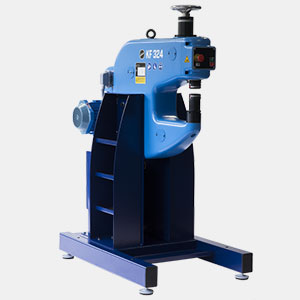Wet blasting technology has been around for some time now. It’s often viewed as a dry blasting alternative, with a liquid spray adding some interesting extra features to the abrasive medium’s flow characteristics. In sheet metal forming, a production-centric activity that targets the steely skins of complex objects and structures, the focused slurry blasts dirt and grime out of existence without causing any damage to that thin alloy panel.
A Non-Destructive Sheet Metal Forming Agent
Metalworking shops use powerful tools to cut and deform large alloy-reinforced sheets of metal. It’s a rough-edged environment, a place where sharp carbide blades and bending machines slice and twist ferrite parts like they’re made of plastic. Over at the wet blasting station, things are a little different. The abrasive backbone is suspended in a liquid medium. It’s non-destructively cleaning the thin metal sheets. There’s no warping taking place, nor is the plastically deformed panel losing its just-added geometrical profile. As for the oily films and corrosive scale sticking to the metal like a second skin, they’re washed away in seconds by the irresistible liquid force.
Produces an Ideally Cultivated Surface Finish
Dry blasting media can create some precise surface profiles, especially if the source metal is soft and malleable. If that alloy is harder, that equipment blast operation can introduce micro-fractures. A non-destructive wet blasting setup avoids this nasty event by using the fluid characteristics of the slurry stream to generate specific surface finishes, even when those finishes are loaded with cold worked stress. Furthermore, the innate solvency properties of the liquid dovetail readily with the aggressive nature of the various abrasive media types to assure reproducible results. Essentially, if the signature look and properties of a particular finish are mandated, then the fluid temperature can be altered, the suspended solid media exchanged, and the gas pressure regulated. Finally, this is an abrasive process, but it’s one that does not generate heat, so thermal deformation issues are extremely unlikely.
Sheet metal parts are exposed to torturous quantities of stress when they’re cut and deformed. Thinner sheets are transformed into complicated geometrical profiles. The entire mill is loaded with stress and strain. Non-destructive wet blasting technology breaks that trend by using its liquid jet as a sheet metal finisher. The fluid cleans and cools while the solid media saturating that liquid introduces a client-mandated surface finish. Unhampered by heat, incapable of warping the flat edges and contoured surfaces of that sheet metal part, wet blasting technology guarantees a clean and perfectly finished product.
For more information, visit our Eckold page or contact us.


